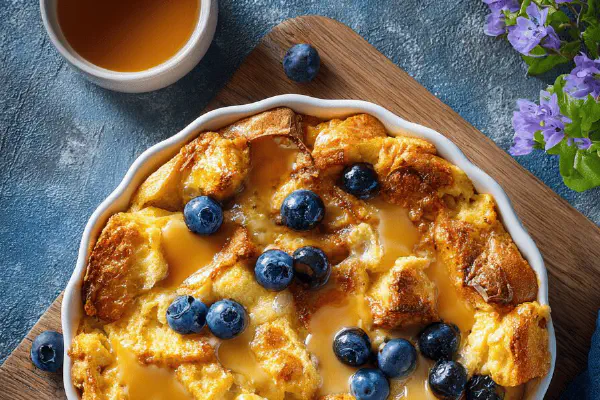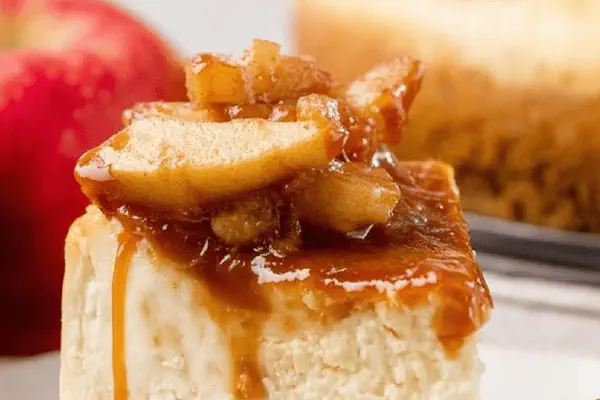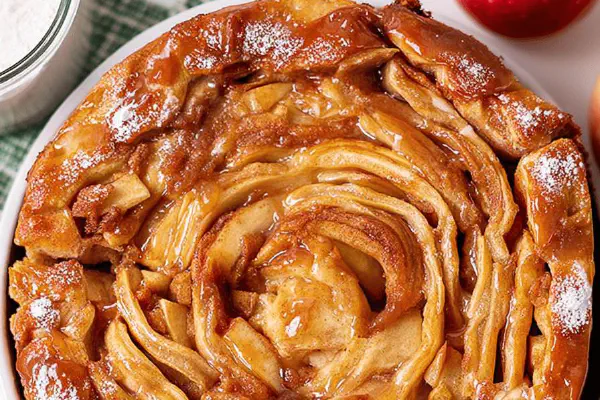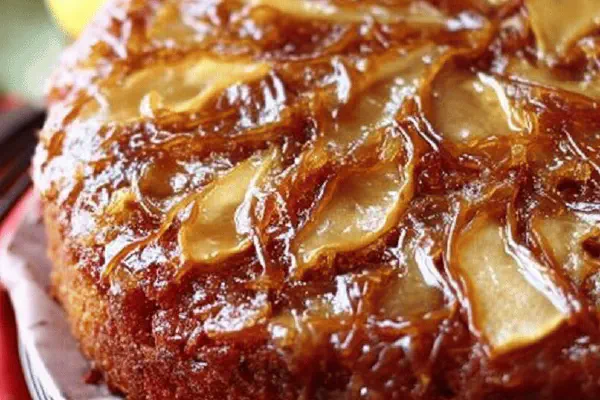Corn Cream & Caramel Cornflakes
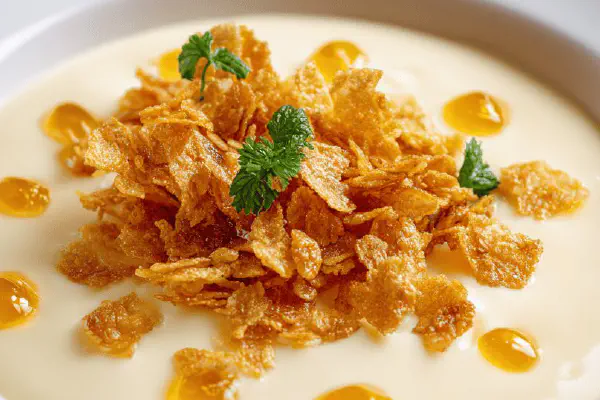
By Emma
Certified Culinary Professional
Ingredients
- 9 ml (1 ¾ teaspoons) gelatin powder
- 65 ml (¼ cup plus 1 teaspoon) cold water
- 475 ml (2 cups minus 3 tbsp) fresh corn kernels (about 2 ears)
- 240 ml (1 cup) whole milk
- 130 ml (½ cup plus 1 tbsp) heavy cream 35%
- 105 ml (7 tbsp) granulated sugar
- 6 ml (1¼ tsp) cornstarch
- 2 large egg yolks
- 2 ml (½ teaspoon) vanilla extract
- Zest of ½ lemon (new ingredient twist)
Caramelized Cornflakes
- 40 ml (2 ¾ tbsp) unsalted butter melted
- 260 ml (1 cup plus 2 tbsp) Corn Flakes cereal
- 25 ml (1 ½ tbsp) granulated sugar
About the ingredients
Method
Gelatin soak
- Scatter gelatin evenly over cold water. Let sit until soft, about 7 minutes. Will swell like a tiny sponge. Don’t rush or powder clumps cause uneven dissolve later.
Corn purée
- Blend corn kernels with milk until smooth but not watery. Use high power short bursts. If too thick, add 1-2 tbsp more milk; texture matters here – think creamy but not undone soup.
- Fold in cream gently, just to combine. Rest mixture; flavors meld. I’ve found this adds silkiness and tempers sweetness without heaviness.
Thickening custard
- Off heat, whisk sugar with cornstarch so no lumps. Add egg yolks and vanilla extract plus zest. Whisk until a smooth paste. Add corn mixture gradually, stirring constantly.
- Transfer to medium saucepan. Cook over medium heat, stirring with a silicone spatula, scraping bottom to avoid scorching. Mixture thickens after 5-8 minutes. Look for nappe stage – coats back of spoon cleanly with visible thickness but still fluid.
- Do not rush boiling. Stir often. Boil briefly once thickened – bubbles should be large and slow, not fierce rolling boil. Overcooking scrambles yolks or toughens texture.
- Remove pan from heat.
Incorporate gelatin
- Squeeze excess liquid from swollen gelatin, discard liquid. Stir gelatin into hot custard until fully dissolved. If lumps appear, whisk rapidly to fix or strain immediately through fine mesh to ensure ultra-smooth finish.
- Pass custard through fine sieve to catch bits of cooked egg or corn debris.
- Pour evenly into 6 small ramekins (125 ml / ½ cup size). Smooth surface.
- Cover with cling wrap pressed directly onto surface to prevent skin forming.
- Refrigerate minimum 5 hours or up to overnight for firmness yet delicate jiggle in center.
Caramel cornflakes
- Center oven rack, preheat oven to 185 °C (365 °F). Line a baking sheet with parchment paper.
- In mixing bowl, combine melted butter and cornflakes gently to coat without crushing too much. Sprinkle sugar evenly over flakes and fold carefully again.
- Spread mixture in a thin, even layer on prepared sheet. Avoid overcrowding clumps to ensure even caramelization and crispness.
- Bake about 6-9 minutes; watch closely—cornflakes darken quickly from golden to burnt. Brown bubbling sugar aroma signals readiness. Pull out when crisp, not scorched.
- Cool completely on sheet; caramel hardens and crunch develops.
Serving
- Unmold cream if desired or leave in ramekins. Spoon caramelized flakes atop just before serving for contrast.
- Textures: cool, creamy custard balanced by warm, crunchy sweetness.
- Variations: swap lemon zest for orange; use brown sugar in flakes for molasses depth; substitute milk with oat or almond for dairy-free adaptation but expect softer set.
Cooking tips
Chef's notes
- 💡 Start gelatin soaking early; cold water critical. Powder swells slow—rushing means clumps. I once mixed in hot water—messy lumps followed. Squeeze off excess water before adding to hot custard; too much liquid thins texture, too little and gelatin stays grainy.
- 💡 Blend corn kernels carefully; use short pulses not long blur. Corn starch in kernels can glue mixture if over-blended. Cream adds silkiness; fold in gently to avoid breaking custard’s light texture. Let mixture rest for flavor melding—no rush folding, but don’t over stir or air deflates richness.
- 💡 Whisk sugar and cornstarch off heat before egg yolks—keeps lumps away. Add zest with vanilla for brightness but add last to avoid cooking aroma loss. Heat custard on medium, stirring constantly with silicone spatula. Look for nappe texture—thick coat on spoon, slow bubbles but no rapid rolling boil. Rushing scorches, yolks scramble.
- 💡 Incorporate gelatin immediately off-heat to prevent lumps. If lumpy, rapid whisk or strain through fine mesh. Passing custard catches floaters—egg bits or kernel debris—ensures custard clarity and mouthfeel. Cling wrap on surface stops skin, refrigerate minimum 5 hrs for soft but firm texture; overnight firms further but risks slight wateriness.
- 💡 Caramel cornflakes need butter-coated gentle folding to avoid breakage. Spread thin on lined baking sheet; clumps won’t caramelize evenly. Bake at 185 C; watch closely, minutes matter. Smell browned sugar; visual cues: golden edges not dark spots. Cooling solidifies crunch. Store flakes separate for crunch retention before serving.
Common questions
Why soak gelatin in cold water?
Cold water enables powder to swell properly; heat can melt unevenly or cause clumps. Gelatin needs to bloom fully to dissolve smooth when added to custard. Skipping this step leads to grainy custard or poor set.
How to avoid lumps when adding eggs?
Whisk sugar and cornstarch before adding yolks off heat; mix yolks gently in. Temper with corn mixture slowly, whisk fast. Heat medium. Stir constantly to stop curdling. Alternative: strain late stage if lumpy already formed.
Custard too runny—fix?
Chill longer first; gelatin firms with time. If still loose, better to blend in more gelatin dissolved in warm water. Don’t boil custard too hard—it breaks yolks, ruins texture. Can add tiny extra cornstarch but risk gluey mouthfeel.
How to store leftovers?
Keep custard covered tightly sealed; individual ramekins help. Refrigerate up to 3 days. Caramel flakes store best in airtight container, room temp, to keep crunch long. Combine flakes with custard just before serving to avoid softening.
